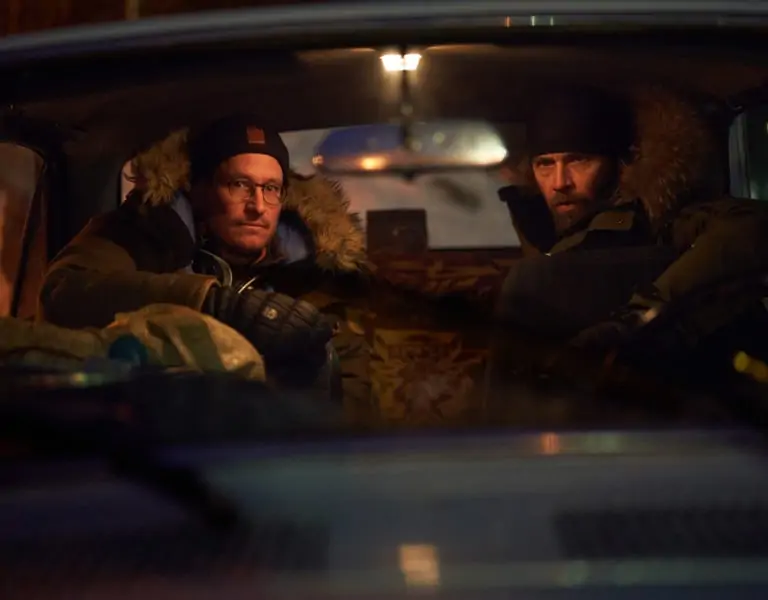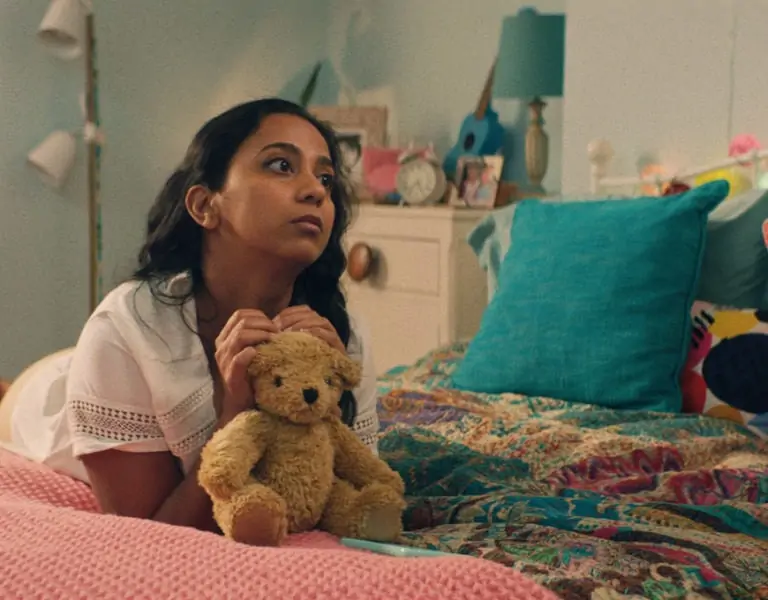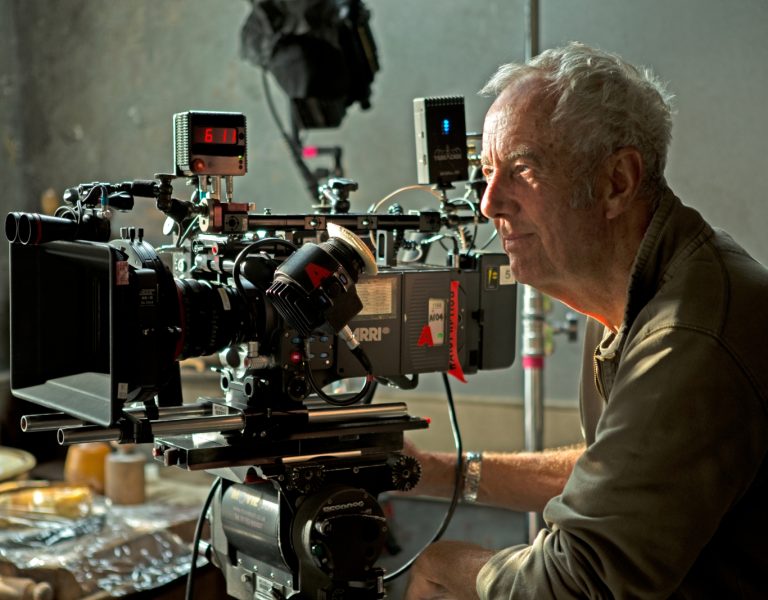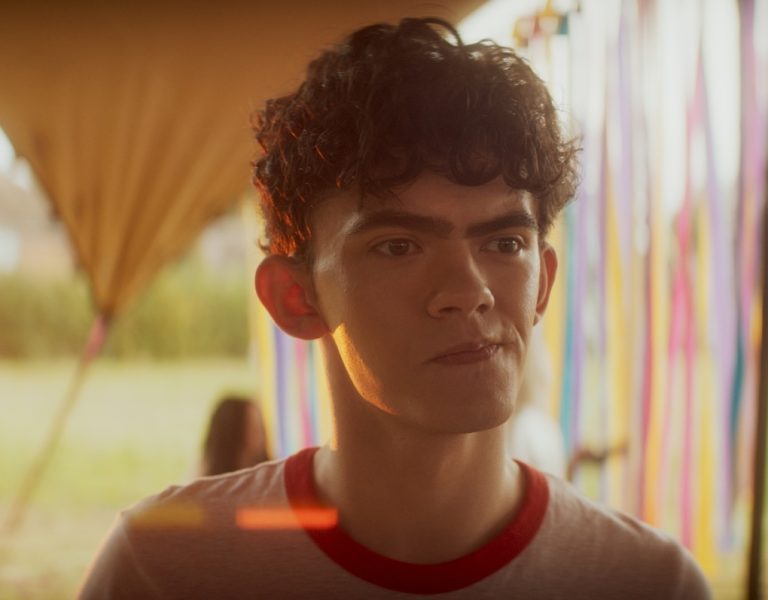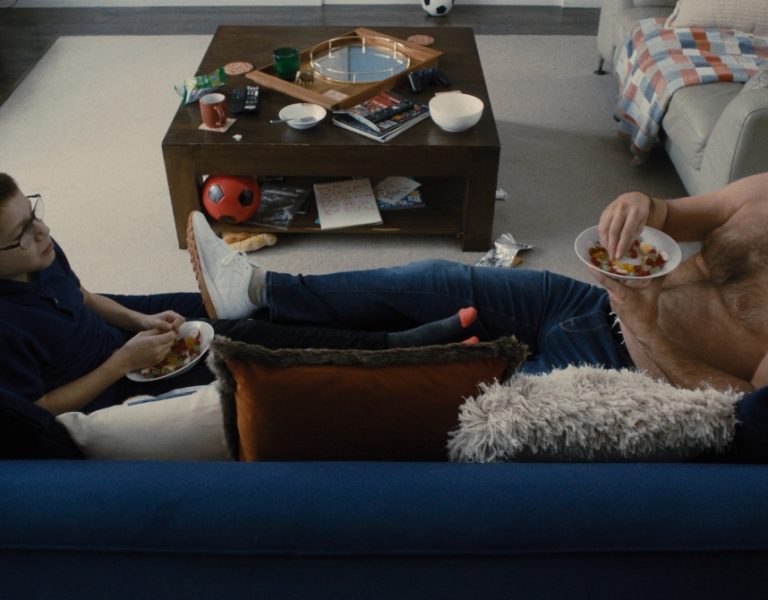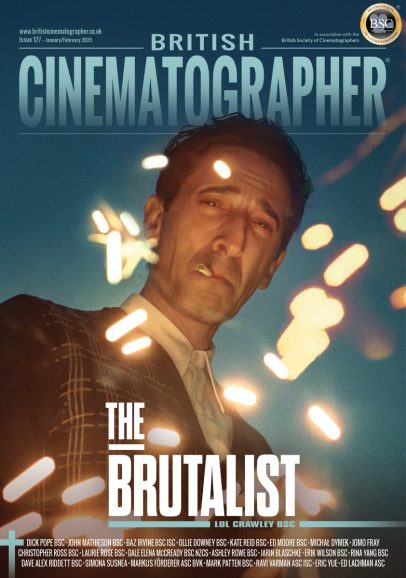Despite the heat, Hollywood finds relief as IATSE secures a new contract with AMPTP, promising wage increases and AI protections.
The tentatively agreed-to changes include “scale rate increases of 7%, 4%, and 3.5% over the three-year term,” along with “additional increases in pay [that] will take effect on non-dramatic productions under the Videotape Supplemental Agreement.” Interestingly, according to the press statement, the deal also “includes new protections around artificial intelligence, including language that ensures no employee is required to provide AI prompts in any manner that would result in the displacement of any covered employee.”
What that means – including for those perhaps now more dispensable non “covered”” employees – will be further clarified with a more complete summary to be released over the holiday stretch, along with “a multi-local webinar” that will come after, on Saturday, July 13th to further review the agreement – increased employer payments to the pension and health plan, and more – and, one assumes, gauge its support.
Which one also assumes is likely be pretty strong, given that Hollywood still hasn’t fully recovered from the last rounds of post-pandemic strikes, to say nothing of the pandemic, though whether it will ever look like it did before remains a very open question.
And it was one of the very questions that threaded itself throughout this year’s Cine Gear show, which found itself in brand new backlot terrain, at Warner Bros. studios, just over the Hollywood hills from former host Paramount, which is currently in the throes of cost-cutting, layoffs, and website shuttering, and perhaps not in a position to do much hosting at all.
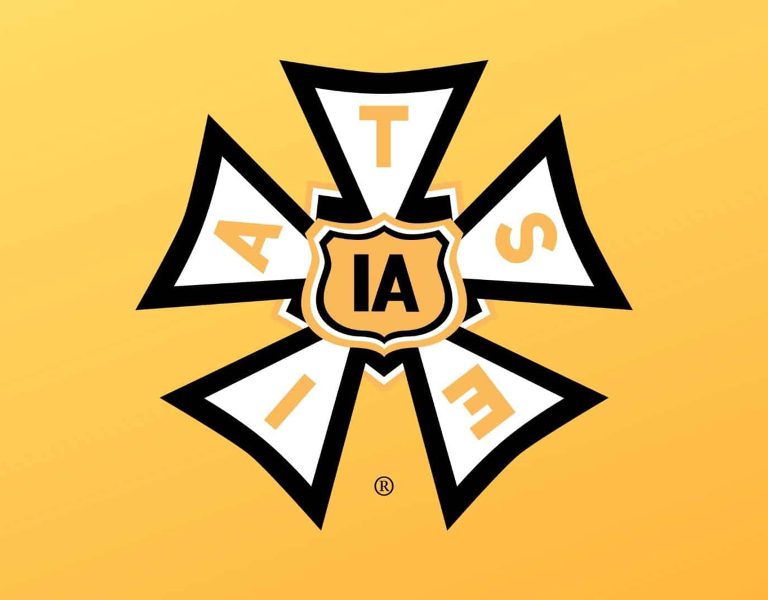
As for Warners, not immune from some studio-wide roiling of its own, they did seem happy to have the event, with bits of studio-owned iconography everywhere you looked: Batman and Justice League statues, Mystery Machines, Looney Tune icons, Barbie Corvettes, et al, displayed along the walkways and backlot boulevards.
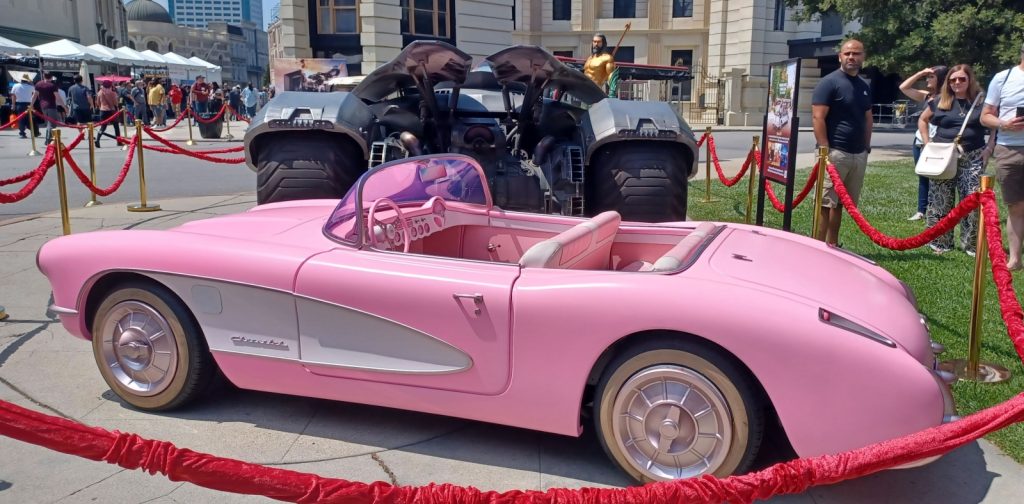
As Cine Gear CEO Juliane Grosso said later, “attendees and exhibitors alike were excited to get another Hollywood studio experience, and Warner Bros. pulled out all the stops to show off their beautiful backlot and stages. Where else could folks check out the latest camera gear and walk around actual Batmobiles and other authentic motion picture treasures? There were lots of smiles this year”.
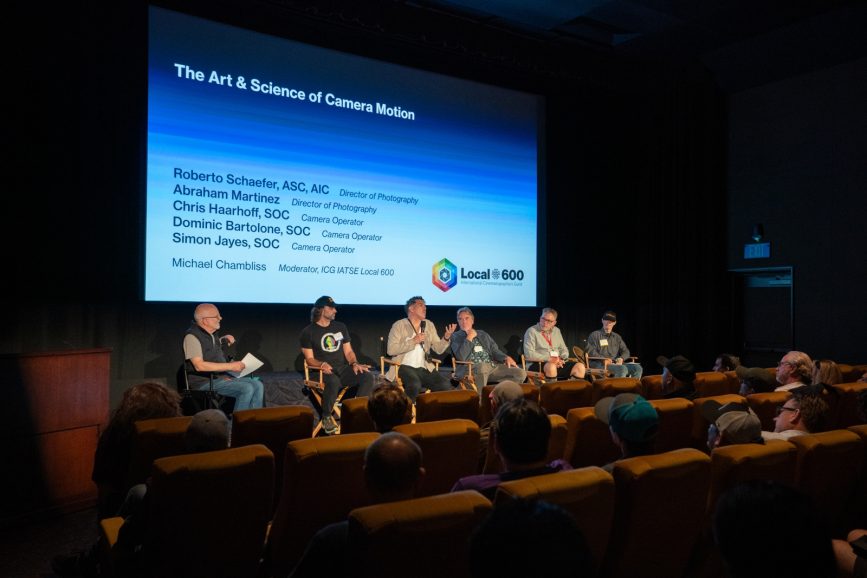
While Warners was doing its pre-show decorating, pre-show busyness started early too, with receptions and demos, perhaps because so many showbiz vendors and manufacturers are located an easy ride hail away, in those neighborhoods stretched between the studios and the Burbank airport.
Indeed, our first stop, early in the week, was for the tacos and beer (or spiked horchata, if one was feeling adventurous) sponsored by Kino Flo at their own facility, right across from those airport runways, where the smiles, and the conversation also turned to whether Hollywood’s ongoing job contraction could indicate the film biz was “reverting to mean” – i.e., smaller and harder to get into, the way it was before all that investor-fueled streaming money made it seem like movies.
Though perhaps it all depends on one’s definition of “expand.”
Another pre show event included a demonstration by Panasonic – in a Warners screening room – of their Lumix GH7, a “prosumer” camera, coming right on the heels of Canon’s own lunchtime introduction of its new full frame EOS C400 cinema camera, with a native RF-mount, in its own local showroom, some 60 minutes earlier, and just a few blocks away.
In its current incarnation, the reworked Lumix is now ARRI LogC3 enabled, which means that colour matching with ARRI’s digital cinema cameras – priced tens of thousands dollars more than the modest four-figure tag on the GH7 – can now be achieved. It’s been ARRI certified, and comes with access to a “look library,” and LUT generating tools, to boot.
ARRI President and CEO Glenn Kennel was there to note this development means that “a broader market will have access to the ARRI look”.

The key there may be “broader market,” as many of the booth demos spoke of how their camera / lens / editing software / small telescoping crane, etc., would be just as useful for those proverbial “content creators” on YouTube, TikTok, and elsewhere.
Which might seem to indicate that even on the hardware side, there may be a search for greener pastures – or at least expanding markets – beyond traditional studio walls. As for programming during the show itself, there was a veritable smorgasbord of panels, talks and classes. Among them, a RED panel with Jeff Cronenweth, ASC; Erik Messerschmidt, ASC and Wally Pfister, ASC, BSC, DGA – moderated by their senior director of global strategic relations, Naida Albright, on Unleashing Creativity: The Influence of Music Videos and Commercials. Given both the trio’s roots in, and frequent return to (sometimes as director) short form projects, one question was about how much gear – like, say, many of the things on display all over the show – was intrinsically necessary to scale the heights of the cinematographer’s art. Or not. Having too much of it around, Pfister opined, “just makes you slower.”
Messerschmidt laid a lot of it on scheduling failures – i.e., directors wanting shots to look like dawn, for example, that aren’t gotten to until midday. “If you want it to look like this at noon,” he said, “then we need all this crap”.
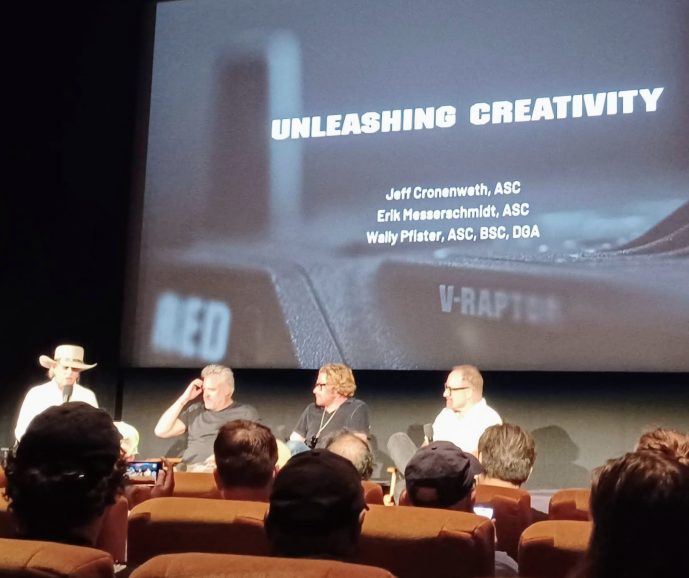
Not that they were at all dismissive. Cronenweth praised the “small form factor” of digital cameras – all of which, Messerschmdt added, were “all really good” now. Which might mean that achieving a specific or resonant look might come down to other tangibles, like lights and glass.
On the latter, Markus Förderer ASC, along with the storied Ed Lachman, ASC and Polly Morgan ASC held a seminar on how to use the Cineflares database that Förderer founded, where you can search out characteristics on nearly a century’s worth of glass – including, yes, how it flares – where back-catalog names like Bausch & Lomb’s Baltar lenses came up in conversation a lot. A kind of underlying aesthetic was provided by Lachman who noted, for his many projects, that “I try to shoot the glass that would’ve been used in that time period,” while Morgan said that if you’re in a production where flares might be added in post, then at a minimum, try to “shoot the flare plates” yourself.
Around the corner from the Cineflares panel, in the soundstages used for additional display, there were numerous demos and debuts. Among them, Blackmagic’s senior technical solutions specialist, Sarah Jones, showed off the company’s range of K’s, as it were, in new cameras including their PYXIS 6k, which hews to that d “small form factor,” and its URSA Cine 12k, which like its smaller sibling has a range of lens mounts, and, according to Jones, can “down res to 4k”, for those looking to master finished projects for streamers, and “can go to 9k on Super 35″. It should be shipping later this season in its own custom case.
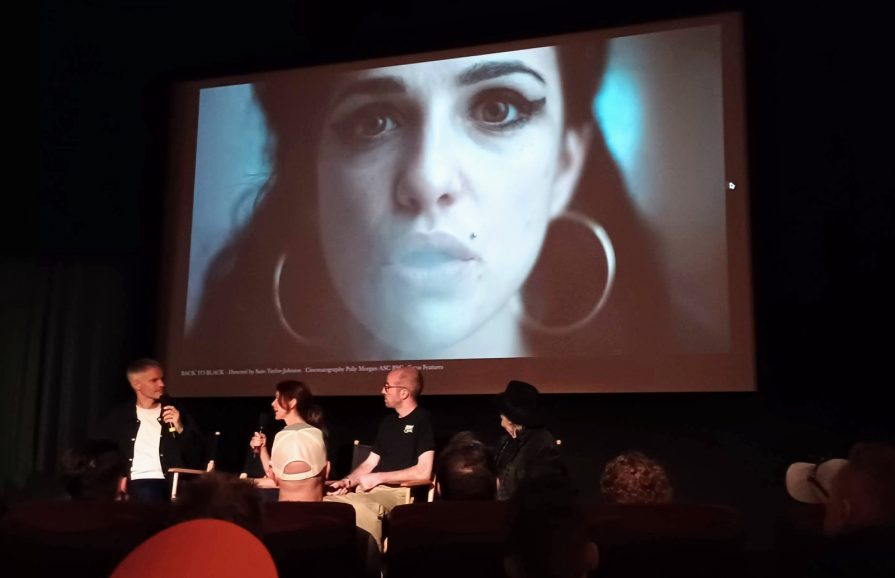
As for customising on the editing and search fronts, with already-shot footage, Michael Cioni was there with his new startup Strada, which had nabbed some NAB awards earlier, which seeks to use AI to create “well-hydrated metadata,” in his phrase, so that a much more refined search can be undertaken when compiling images. Cioni mentioned that Strada is “trying to be like Switzerland, in a way,” and make itself compatible with most other cloud-based workflow and editing platforms (where one might export footage with those expansively-hydrated media tags provided by Strada). The company’s release also noted that it was built for not only “Hollywood cinematographers to indie filmmakers,” but, “YouTubers and every collaborator in between.”
Just like so much of the gear there, as the definition of the “Cine” in “Cine Gear” keeps expanding.
As for the Hollywood side of things, earlier that day the ICG 600 had a panel on The Art & Science of Camera Motion,comprised of of DPs and operators, and moderated by the guild’s Assistant Western Regional Director Michael Chambliss, who wrote us later to note – postproduction lens flares notwithstanding – that “the options for how we can move the camera have exploded over the last several years, but the ‘when’ and ‘why’ remain at the core of the cinematographer’s art.”
Many of those “whens,” and also “hows,” were honoured in the award ceremonies that have become an increasingly key part of the weekend proceedings, too. Cine Gear’s own awards, on the show’s first night, honoured the ASC’s long-serving Patty Armacost, for the Heart of the Community Award, named for the show’s late co-founder, Karl Kresser; Team Deakins – as in Sir Roger Deakins CBE BSC ASC and James Deakins – as Industry Innovators for their podcast; and Rodrigo Prieto, ASC AMC, for their Visionary Award, after his impressive doubleheader of Barbie and Killers of the Flower Moon, last year (and as he moves over to the director’s chair, himself!)

Women in Media kicked the award side off earlier with its ICON + Altitude Awards, with the latter going to emerging DPs, operators and gaffers, and the former to PR and communications maven Susan Lewis (who has helped arrange a share of the interviews and events coverage that wind up in the column here). Writing to us post-honorific, she said that since meeting WiM founder Tema Staig ‘three years ago, “I have been overwhelmed by her consistent dedication to equalizing gender roles [behind the scenes and] doing what I can to connect and promote more diverse players on set via the technology—but it’s a long game. Hopefully when these strange days conclude we will see progress once again. But I sleep better knowing that people like Tema and the WiM members are on the front lines, reminding folks that parity is essential.“
Which echoed something that DP Abraham Martinez told us in the wake of the ICG’s panel, where one of the unique aspects was that the younger speakers had all worked with the more senior ones at some point during their own careers. He spoke of the camera department, in Local 600 being “a long-range game and you don’t know where you’ll be in the future. I’m truly grateful to have the support of everyone, my team, and tap into a community that is real.”
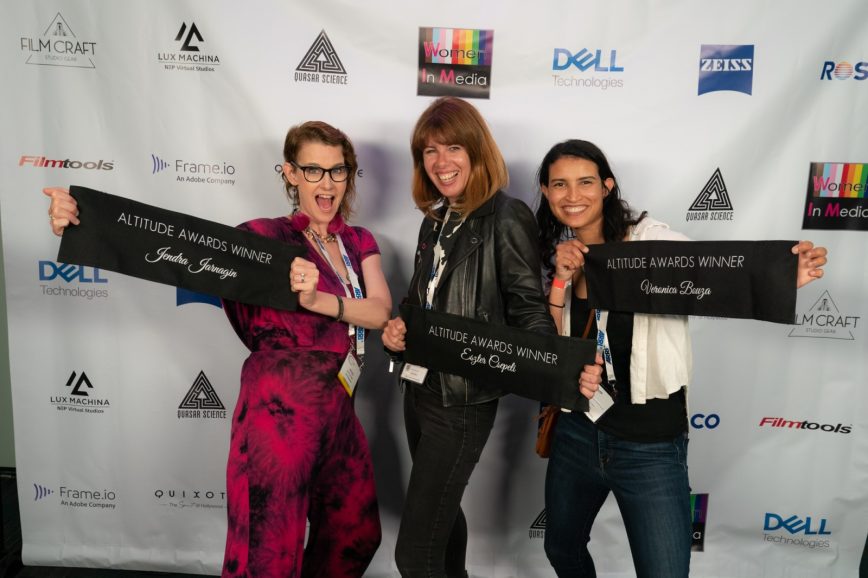
Real indeed, and quite in evidence at the show. Even if those departments aren’t always operating with the same set of rules, or agreements, on each side of the pond. One example is that mentioned by Alicia Robbins, who shot the bulk of Bridgerton’s third season, and, who we interviewed in last month’s column.
When taking over from the series’ established DP, Jeffrey Jur ASC, she spoke of putting “her own stamp” on the show, while balancing that with the visual “rules” that had already been established.
In hiring her own crew, she specifically mentioned “the British system” (not covered by the IATSE agreement!) where “people are negotiating their deals individually with each production. The crew goes where the money is. There isn’t this loyalty to a show or a DP, per se. They have to kind of jump ship .”
Though hopefully the conditions on each new “ship” are positively influenced by what the cinematographers in ICG 600 – and all their crew counterparts – have managed to negotiate here.
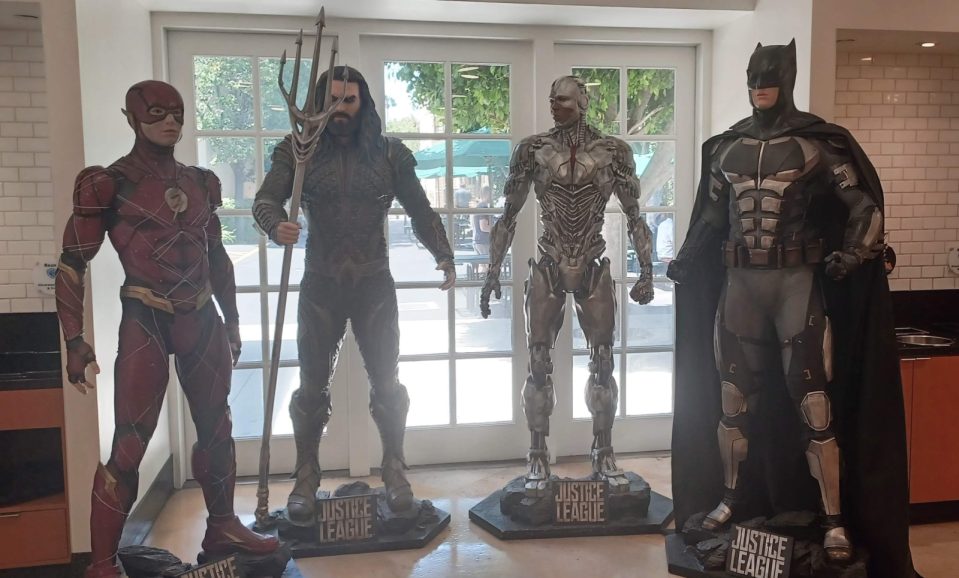
As for the importance of picking crew well, that explicitly came into play in perhaps the season’s buzziest scene, wherein newfound romantic partners – and fiances – Penelope Featherington and Colin Bridgerton, make love for the first time.
It’s a scene that manages to be explicit and tender, all at once, one that was always likely to “break the internet,” as someone remarked to Robbins when they were colouring in post. It was also part of the reason, given NDAs and a first time “two chunk” episode-releasing scheme for the series, that we couldn’t quite talk about any of this last time out.
To shoot the scene – set in an empty home that the intendeds intend to move into (it’s always nice to have spare houses in the clan) – everyone was off the set except the actors, Nicola Coughlan and Luke Newton, and the camera operator of two seasons’ standing, Lionel Garrote. “We made it so he was the only one in the room,” Robbins said. “Even the focus puller (was) out of sight,” as was the on-set intimacy coordinator.
The focus pullers, similarly, were “around the room [but] out of sight”.
As for lighting. Robbins kept it “delicate for them, so they felt they were alone. I had light pushing through the windows – I was using 2500 ISO base (shooting, as mentioned earlier, on Sony Venice 1s, with ARRI Signature Primes) so the light levels were really low. They didn’t feel like they were ‘lit.’” All things, she adds, helping the actors feel more comfortable on set.
But even when the scenes aren’t of the internet-breaking variety, Robbins likes to use a “high ISO base. [There are] fewer flags, less energy consumption.” And often, she reports, people arriving on set asking “where’s the light?”
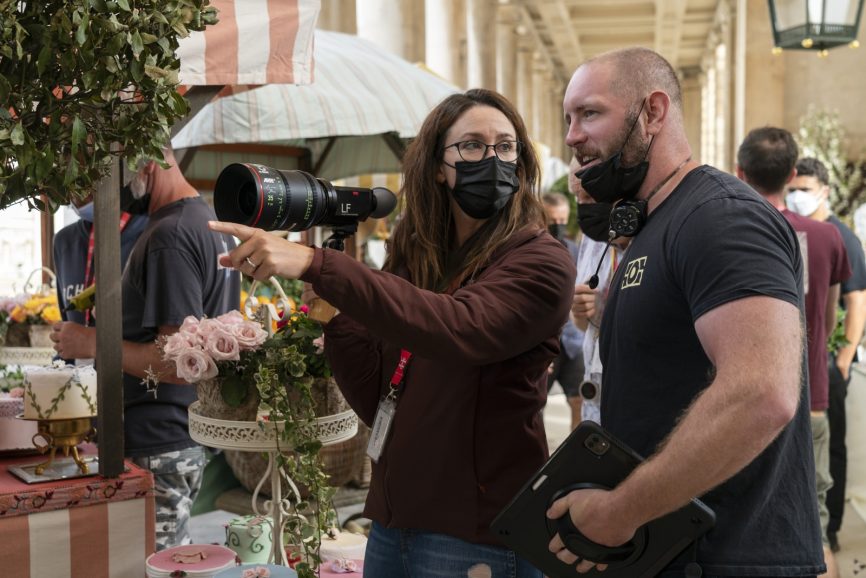
In some ways, it’s the question of the moment, in so many aspects of life – even with summer busting out all over.
See you further into the season – as Emmys start to draw nigh – next time out.
@TricksterInk / AcrossthePondBC@gmail.com






